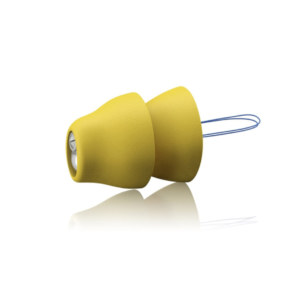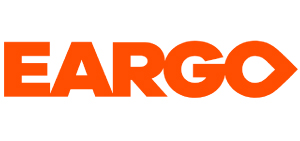Phonak vs. Oticon: Which Hearing Aids Are Best for You?
AgingInPlace.org keeps our resources free by working as an affiliate partner with some companies mentioned on our site. These partnerships or the commission we may earn do not affect our opinions or evaluations of the products we mention. Our reviews are solely based on our research methodology and from input from our AgingInPlace.org Advisory Board. Learn more about our ad policies.
Phonak vs. Oticon: Which Hearing Aids Are ...
Products carousel
Key Takeaways
- Phonak and Oticon are technologically advanced hearing aid manufacturers that produce hearing aids to correct mild to profound hearing loss.
- Both companies manufacture BTE, RIE and IIC hearing aid styles, and other popular hearing aid styles.
- Only Phonak has a 100-percent invisible, extended-wear hearing aid.
- Both companies require an in-person audiologist appointment to purchase their hearing aids.
- Phonak and Oticon hearing aids are an investment. If you’re a veteran, you may be able to use insurance to help cover the cost of certain styles from both companies.
Oticon vs. Phonak: Which Hearing Aids Are Best for You?

Phonak and Oticon are two FDA-approved hearing aid manufacturers known for using highly-advanced technology. Both companies produce extensive hearing aid lines that address and correct hearing loss ranging from mild to profound.
Whether you’re shopping for your first pair of hearing aids or looking to make a change, you will find a variety of options from either company. It is important to note that you’ll need to book an in-person appointment with an audiologist to buy hearing aids from Phonak or Oticon. Both brands are a bit more of a financial investment compared to other hearing aids on the market, but many users say they’re worth the extra cost.
Oticon Hearing Aids
Oticon has more than a 100 years in the hearing aid industry and has built a reputation for continually breaking technological boundaries. Oticon is a division of Demant, an international hearing healthcare company.
Oticon manufactures a large line of hearing aids designed to correct mild to profound hearing loss in adults. The brand also manufactures hearing aids for children and for people with one-sided hearing loss.
Every Oticon hearing aid utilizes BrainHearing, a trademarked technology that delivers more sound to the brain, where electrical impulses are translated into sound. BrainHearing technology sharpens sound, enabling the listener to strain less in an attempt to decipher the sound.
Oticon hearing aid styles include invisible-in-the-canal (IIC), completely-in-the-canal (CIC), receiver-in-the-canal (RIC) and behind-the-ear (BTE). The brand´s hearing aids include BTE styles that are discreet in size, such as the Oticon More miniBTE T.
There are rechargeable and non-rechargeable options available, most of which include Bluetooth connectivity for easy streaming.
Oticon is sold directly during in-person appointments with audiologists and hearing aid professionals. The cost of Oticon hearing aids varies based on the professional you work with. Oticon hearing aids can be pricier than other hearing aids, but many users feel that the higher cost is justified based on the clarity of hearing they provide.
Oticon More is Oticon’s newest line of hearing aids for mild to severe hearing loss. They’re available in four BTE and RIC models:
- miniBTE R
- miniBTE T
- miniRITE R
- miniRITE T
Each pair of Oticon More hearing aids contains a Deep Neural Network (DNN) computer chip that is trained on 12 million real-life sounds. This enables your brain to readily identify sound in a vast range of hearing environments.
According to Oticon, the Oticon More hearing aids line delivers 30 percent more sound to the brain and significantly reduces listening effort over time. They also increase speech understanding by 15 percent.
Oticon More hearing aids include telecoil, which is a type of induction coil that is placed directly inside a hearing aid. Once activated, telecoil enables the hearing aid to connect to telephones and assistive listening devices. Two-way hands-free communication is available for all iPhone and iPad devices. If you use Android, direct streaming is available for certain devices only. Rechargeable and non-rechargeable options are also available.
According to pricing provided to our reviewers by ZipHearing and HearingTracker, Opticon More hearing aids range from $1,599-$3,750 per hearing aid.
Oticon has a contract with Veterans Affairs. If you’re a veteran, you may be able to use your insurance to buy Oticon hearing aids at a VA audiology clinic.
Phonak Hearing Aids
Phonak is a technologically advanced hearing aid manufacturer. The business is a division of Sonova, an international hearing care company based in Switzerland.
Phonak is known for its use of cutting-edge technological innovation. This company was the first to provide universal Bluetooth connectivity to hearing aid users. It was also the first to manufacture a waterproof, rechargeable hearing aid (Phonak Audéo Life) and a 100 percent invisible hearing aid (Phonak Lyric).
Phonak’s extensive line of hearing aids include styles ranging from behind-the-ear to completely invisible-in-the-ear. Styles are available that correct mild to profound hearing loss and one-sided hearing loss. Phonak hearing aids are available for all age groups, from infancy through adulthood.
Phonak hearing aids are somewhat pricey compared to other options and are only available via in-person visits with an audiologist or hearing professional.
Phonak currently has a contract with Veterans Affairs. If you’re a veteran, you may be able to use your insurance to buy Phonak hearing aids.
Phonak’s Lyric is the only extended-wear hearing aid currently on the market. It’s inserted deep into the ear canal by an audiologist, where it remains for around three months. Lyric provides 24/7 hearing. It’s also moisture proof and ear wax repellant.
Lyric comes in seven sizes. It uses the ear’s natural shape to provide natural, clear sound. Users report that the Lyric allows them to completely forget they’re wearing hearing aids for months at a time. If you want to eliminate the hassle of changing batteries or recharging your hearing aids, the Lyric may benefit you. It is important to note that the Lyric can’t be used for streaming.
The Lyric is sold by an annual subscription. You get a new pair inserted as needed throughout the year. The cost of the Lyric varies based on the professional you’re working with. You can expect to pay anywhere from $3,000-$6,000 for an annual subscription that includes two Lyric hearing aids.
Features Vary with Phonak vs Oticon
Both brands are chock-full of special features that can improve your hearing and enhance your quality of life. Different styles have differing features, so make sure to let your audiologist know what is most important to you.
Bluetooth Connectivity
When it comes to Bluetooth connectivity, both Oticon and Phonak have a large selection of hearing aids that offer Bluetooth streaming for iPhone and select Android devices. With Bluetooth, you can stream phone calls and media directly to your hearing aids or connect wirelessly to other devices.
- Oticon’s More, Zircon, and Play PX lines feature Bluetooth.
- Phonak’s Naida Marvel and Naída Paradise feature Bluetooth.
Tinnitus Relief is Different with Phonak vs. Oticon
Tinnitus relief is another important topic for many hearing aid users. Tinnitus (ringing in the ears) is a common complaint that often accompanies hearing loss. Tinnitus can range from mild to severe.
- Phonak digital hearing aids provide amplification and a sound generator that helps distract the wearer from tinnitus sounds. Many Phonak hearing aids can also be used to stream tinnitus-relieving therapy sounds directly to your hearing aids.
- Oticon hearing aids that contain Tinnitus SoundSupport distract you from tinnitus noise with relief sounds like ocean waves and white noise. A library of volume-adjustable tinnitus relief sounds are available to stream into your hearing aids through the Oticon ON app for iPhone and Android.
Smartphone Apps
Smartphone apps may also be of importance to you. Hearing aid apps enable you to perform a variety of functions, from connecting you to your hearing care professional to adjusting your hearing aids.
- The myPhonak App connects you with your healthcare professional, so you can share real-time information about your hearing aids and get remote support via video calls. This app also contains a hearing diary. The app can be used with all Bluetooth-enabled smartphones. Hearing aids that connect to the app include the Naída Paradise, Audeo Paradise, Audeo Marvel and the Bolero Marvel.
- The Oticon On App lets you stream television audio directly to most Oticon hearing aids. Along with a small remote control device, the app lets you make adjustments to your hearing aids, including the volume level. It also connects your hearing aids to other internet-connected devices, such as a smart thermostat or home alarm.
Hearing Aid Styles Available
When it comes to choosing a style, the type of hearing loss you have will determine, in part, the style of hearing aid that will work best for you.
- Oticon and Phonak both offer a wide range of behind-the-ear, receiver-in-the-ear, and in-the-ear models.
- Phonak also offers the Lyric, which is completely invisible in the ear.
Noise Reduction
Noise reduction is crucial to making the process of hearing easier. For this reason, hearing aids must be able to intuit which sounds are important to you and which are not. They should also be able to eliminate feedback sounds, such as static.
- Phonak hearing aids identify and adapt to a wide range of hearing environments. They’re able to emphasize important sounds from any direction and reduce noises that get in the way of conversations, such as crowd sounds.
- Oticon hearing aids have OpenSound Optimizer technology that eliminates the whistling and static that occurs when someone or something comes in close contact with your hearing aids. Some Oticon hearing aids, such as Zircon, also have OpenSound Navigator. This feature rapidly removes environmental noise by scanning the hearing environment 100x per second to separate noise from speech and other important auditory inputs.
Rechargeable vs Disposable Battery
Users will have their choice of chargeability options. Both Oticon and Phonak have rechargeable hearing aids and hearing aids that rely on disposable batteries. Some styles are available in both options. When deciding which type to get, keep hand dexterity in mind. Hearing aid batteries are very tiny. If you have a condition that limits dexterity, such as arthritis or Parkinson’s disease, you may prefer rechargeable hearing aids.
Directional Microphones
Directional microphones provide better hearing quality in challenging listening environments for some users, and both Phonak and Oticon have accessories that can enhance listening as needed.
- Phonak uses Roger digital wireless technology to boost hearing ability and speech understanding in noisy places, such as restaurants and in meetings. RogerDirect microphones are installed directly into your hearing aids by an audiologist.
- The Oticon ConnectClip wireless hearing aid accessory has remote microphone abilities that enable you to easily hear someone speaking from far away, such as a lecturer. It’s remote control function also enables you to adjust your hearing aids discreetly.
Cost: Oticon vs. Phonak
Many health insurance plans, including Original Medicare, don’t pay for hearing aids. If you have a Medicare Advantage (Part C) plan, it may cover some or all of the cost. Both companies have VA contracts. Some hearing aid models may be covered by VA Health Benefits.
Oticon and Phonak are both relatively high-end, although their cost will vary considerably based on your geographic location and the audiologist you work with. Some hearing professionals charge extra for bundled services, such as audiological exams.
- In general, you can expect to pay anywhere from $1,000-$4,000 per Phonak hearing aid.
- You can also expect to pay anywhere from $1,200-$4,000 per Oticon hearing aid.
Ask your audiologist if they offer payment plans and money-back, risk-free trials for Phonak and Oticon.
- Phonak has a 30-day risk free trial for its Lyric hearing aids. This is available from any authorized Phonak distributor.
- Oticon has a risk-free trial for Oticon More hearing aids. To activate your trial, you must match with a hearing care professional through the Oticon website.
Other Hearing Aid Brands We Recommend
In addition to Phonak and Oticon, there is a wide range of hearing aids you may wish to consider. Some of the best hearing aids available include:
Eargo is a technologically advanced alternative that is sold online, directly from the manufacturer to the consumer. These hearing aids are for mild to moderate hearing loss.
Jabra Enhance Select hearing aids are affordably priced and include three years of remote follow up care.
Summary
Oticon and Phonak are two FDA-approved, technologically-advanced manufacturers of high-quality hearing aids.
Both companies provide hearing aids for hearing loss ranging from mild to profound. They also manufacture hearing aids for one-sided hearing loss.
If you have tinnitus, you’ll find tools for reducing unwanted tinnitus noise from both manufacturers.
Oticon and Phonak are sold directly from hearing care professionals, such as audiologists. Both brands are relatively expensive. Their exact costs vary based upon the professional you use and your geographic area.
Why You Can Trust Our Reviews
Our experts research and recommend products that can help give you a better quality of life. Using our high standards and rigorous testing methodology, we’ve spent more than 4,000 hours, collectively, researching the best hearing aids to help you find the device that’s best for you. Throughout our research process, we did the following:
- Consulted with audiologists and geriatric care experts
- Mystery shopped the brands
- Surveyed hundreds of hearing aid users
- Tested various models of hearing aids
- Interviewed experts in the field
- Read thousands of verified customer reviews
Frequently Asked Questions
-
Both Phonak and Oticon are top-notch brands that manufacture reliable, high-quality hearing aids. While consumer experiences vary, you can’t go wrong with either choice, provided you enlist an audiologist’s help in picking the right type of hearing aid for you.
-
Phonak is a division of Sonova, an international hearing care company based in Switzerland. The company’s United States headquarters is located in Illinois.
-
Oticon is a division of Demant, a global hearing healthcare company based in Denmark.
-
Yes. Oticon makes a wide range of highly effective hearing aids for hearing loss ranging from mild to profound.
-
Yes. Our review team gives Phonak high marks for its advanced technology and high quality products.
Pricing is accurate as of May 11, 2022.
WRITTEN BY
Corey Whelan is a writer, health care professional, and Brooklyn, New York native. She is a reproductive health advocate who has helped countless patients through the trials and triumphs of infertility and adoption over the past 25 years. Corey's passion is sharing her knowledge of health and wellness through her writing, and no topic is off limits. She's mom to two grown children and two rescue dogs who captured her heart.
View AuthorDo you want to cite this page? Use our ready-made cite template.





